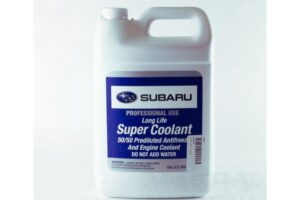When your car starts to overheat, it can cause serious damage to your engine, not to mention various other parts of your vehicle such as the thermostats, gaskets, and most especially, the cooling system. A vital part of the cooling system, the radiator helps prevent overheating, but it may also help cause one if it suffers a leak. This is why it is important to know how to fix a radiator leak.
A radiator fluid leak can be caused by several factors, such as corrosion, worn-out gaskets, and malfunctioning parts. Radiator leaks can lead to overheating and cause serious damage to your car’s engine, but most of them are surprisingly easy to fix.
So, here’s how to fix a radiator leak:
- Apply a Stop Leak Product into the Radiator
- Seal Off Tiny Leaks Using Egg Yolks
- Apply Black Pepper to Seal off a Radiator Leak
- Call a Mechanic
Read on to learn more about the importance of the radiator, the causes of a radiator leak, and how to fix it.
Radiator Leak [Causes and How to Fix]
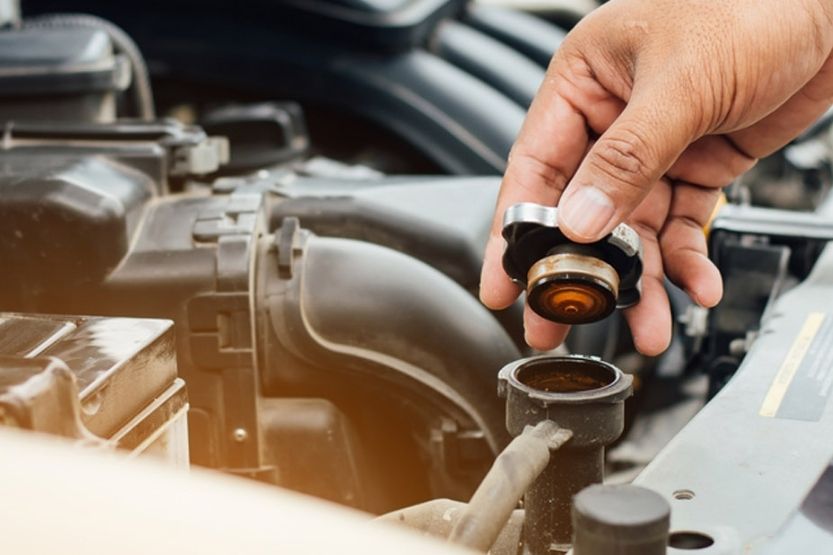
There are several reasons why radiator fluid leaks. It can be due to malfunctioning parts, worn-out gaskets, or corrosion. Radiator leaks can result in overheating, which can cause serious damage to your vehicle’s engine. Fortunately, you can easily fix some radiator leaks.
I will discuss more of it in this article and tips on fixing it.
What Are the Causes of a Radiator Leak?
The possible causes of a radiator fluid leak are the following:
- Corroded Radiator
- Worn-out Radiator Gasket
- Worn-down Radiator Hoses
- Leaking Radiator Cap
- Faulty Water Pump
- Cracked Coolant Reservoir Tank
- Blown Head Gasket
Let’s discuss each one of them:
1. Corroded Radiator
Corrosion is considered the most common cause of a radiator leak. Over time, a radiator will start to wear out and break down from the stress of constant exposure to heat and pressure.
Rust and corrosion will form and accumulate, punching cracks on the surface into which sediment and air will seep through. The cracks eventually develop into larger holes, causing coolant to leak.
2. Worn-out Radiator Gasket
The gasket is responsible for sealing the radiator and the coolant reservoir tank link. When it wears out, it will develop a weak seal. It will cause the coolant to flow out of the system and force what little amount of coolant remains to work harder.
3. Worn-down Radiator Hoses
The hoses which circulate the coolant throughout the radiator are also vulnerable to harsh conditions that cause them to wear down, weaken, and become brittle. Along with the radiator, heater core, and water pump, all these connections with the hoses are especially prone to wear. They are often the main site of a radiator leak.
4. Leaking Radiator Cap
The radiator cap must always be sealed tightly. If not, heated coolant in gaseous form could seep out from underneath it. Coolant in liquid form may also flow out if the opening gets large enough. This is a much less common radiator leak cause and one that you can easily fix just by getting a new radiator cap.
5. Faulty Water Pump
The water pump’s function is to push the coolant through the radiator hoses to the engine, then back to the radiator. The water pump ensures the circulation of the fluid to cool the engine, releasing its heat via the radiator.
Operated by a belt and suspended close to the ground, the pump attaches to the radiator’s lower hose. If the connection to the hose is loosened, or if the pump becomes corroded, it can produce a hole. This will cause the fluid to leak out. If you notice the radiator leak coming from the bottom, it is usually rooted in the water pump.
6. Cracked Coolant Reservoir Tank
Responsible for supplying the radiator with coolant through the hoses, the coolant reservoir tank can also be vulnerable to wear and tear. Made out of plastic, the cap, the connection point with hoses, and the container itself are all prone to cracking and leaking.
7. Blown Head Gasket
The head gasket separates the cylinder head from the engine block. If it is rusted or cracked, it will cause gas, oil, and coolant to wind up in the same place. The engine will be unable to perform its job as the coolant seeps into it, causing it to overheat.
Repairing or replacing a blown head gasket is both expensive and time-consuming. This is because it will require taking apart most of the engine to access it:
How to Fix a Radiator Leak
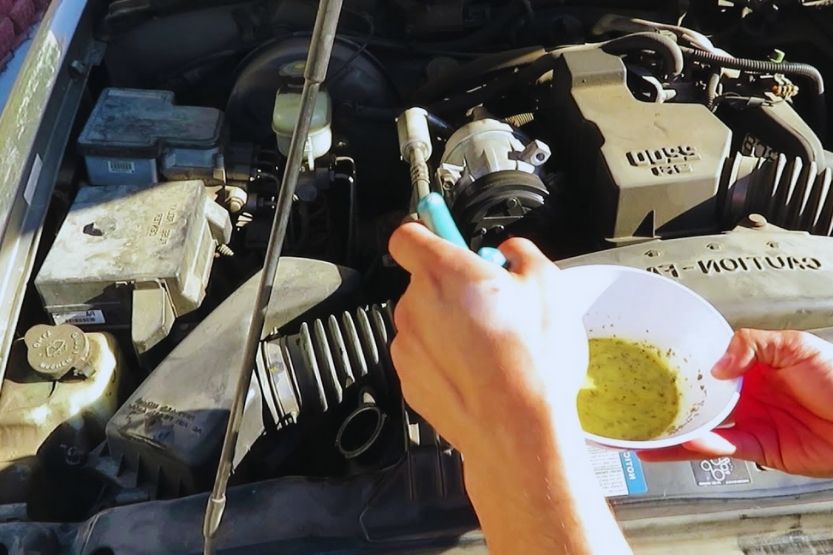
Here are some tips on how to fix a radiator leak:
- Apply a Stop Leak Product into the Radiator
- Seal Off Tiny Leaks Using Egg Yolks
- Apply Black Pepper to Seal off a Radiator Leak
- Call a Mechanic
Let’s discuss each of them:
1. Apply a Stop Leak Product into the Radiator
The easiest and most popular way to repair a radiator leak is by using a stop leak product:
- To apply, pour the product into the radiator.
- Then check the coolant level, and if necessary, top it off. That’s all it takes, and the leak in your radiator is instantly fixed.
If you don’t happen to have any stop leak product within reach, there are a couple of alternative temporary solutions that you can try out. They are also straightforward to do, although you’ll agree that they are rather unusual.
2. Seal Off Tiny Leaks Using Egg Yolks
As strange as it may sound, you can utilize egg yolks to seal off tiny leaks. And while the effect is only temporary, it should hold long enough until you can get a better, more permanent solution, which shouldn’t be too hard.
- Just crack four eggs, separate the yolks from the whites, and then pour the yolks only into the cooling system.
- Start the engine to enable the egg yolks to go far enough into the cooling system and start congealing to seal the leaks.
3. Apply Black Pepper to Seal off a Radiator Leak
You can also use black pepper to seal a radiator leak similarly. All you have to do is pour around half a pepper shaker-full of black pepper into the cooling system, and the leak is sealed for a temporary period. And I stress “temporary.”
Remember that egg yolks and black pepper are only temporary fixes, not permanent solutions for preventing a radiator leak. These should only work long enough until you can get your hands on a good stop leak product to repair the problem permanently.
4. Call a Mechanic
You can easily fix most radiator leaks simply by applying stop leak products. But sometimes, a leak can get so severe that a professional mechanic can only repair it.
For example, you are checking your car for leaks. Then, you notice that the coolant isn’t just dripping but running out of the radiator. It could be time to have your car taken to a repair shop.
Again, what are the causes of a radiator leak? One of the most common causes of a radiator leak is the radiator’s corrosion. Specifically, the radiators, hoses, and hose connections accumulate dirt and rust, which causes radiator holes. Ask the mechanic to check for a radiator leak while changing oil.
What Is the Importance of a Radiator?
Maintains Proper Coolant Level
An essential component of the cooling system, the radiator, is responsible for maintaining the proper level of the engine coolant fluid. The coolant circulates throughout the engine, preventing engine parts from overheating.
Main Avenue for the Engine to Vent Out Heat
A radiator is essential since it is the main avenue for the engine to vent out heat while operating. If the radiator malfunctions, it can cause significant damage to the engine due to overheating. If you can see the smoke rising out of your car, it could be a sign that you have a radiator fluid leak.
Malfunction Caused by Physical Damage
Radiator malfunction is typically caused by physical damage, requiring having one or even all of its components replaced. Other factors that could impair radiator function are expired coolant or a lack of coolant levels, which you can fix through a coolant flush.
How to Check the Radiator
Here are some tips on checking your car’s radiator:
- Park the Car
- Inspect the Radiator Thoroughly
- Get Help from a Professional Mechanic
1. Park the Car
Before you begin your inspection, park your car first and turn off the engine. It will be difficult to check the radiator while the engine is still on. So get your car off the ignition and allow the engine to cool down for a period of at least two to three hours. Then, remove the radiator caps before moving on to the next step.
2. Inspect the Radiator Thoroughly
You will turn the engine back on this time and wait for at least two minutes before you do anything else. This is done to ensure that the coolant is starting to move around inside the car.
Then, get a flashlight and shine it straight in the radiator’s direction. This way, you will see if the coolant is flowing uninterrupted and whether or not the flow is even. If it is not flowing smoothly, it is a sign that the device is malfunctioning.
A quicker way to check the flow of the radiator is by asking someone to rev as you are looking under the hood. While you’re doing so, be sure to squeeze on the radiator’s hose. If the hose has a clog or fault, it will become stiff, which will make it rather hard for you to squeeze it.
3. Get Help from a Professional Mechanic
Once you have determined a problem with the radiator, call a mechanic to fix it for you. If you don’t have any experience or knowledge in car repair, it is best to leave things in the hands of a professional.
What Are the Signs of a Radiator Leak?
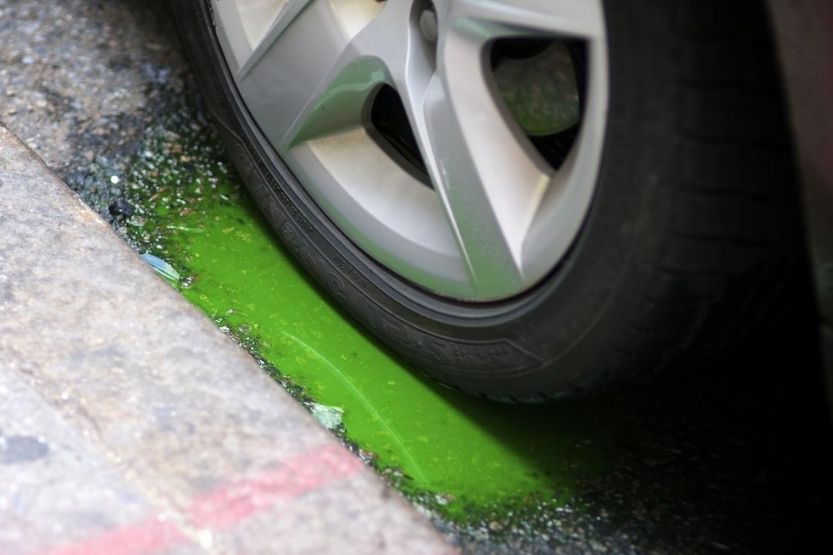
The signs of a radiator leak include the following:
- Puddles of Coolant
- Dripping or Wet Cooling System
- Leaks While the Engine is Running
1. Puddles of Coolant
A puddle of coolant under your car is the most obvious indication that your radiator is leaking. Though, a puddle on the ground doesn’t necessarily mean that it’s from leaking coolant. Also, it doesn’t always mean that the problem lies with the radiator.
Examine the puddle closely. It is most likely coolant if the puddle is blue, yellow, or green. If you are still unsure, see if it has a greasy feel on your fingers. Also, coolant usually has a sweet smell, indicating that this isn’t just water condensed from the air conditioning system.
2. Dripping or Wet Cooling System
The cooling system of your car is made up of several hoses and clamps, any number of which may potentially be the source of the pool of coolant. You will then need to determine exactly where the drip is emanating from.
Usually, a leak in the radiator can start within the cooling fins, at the filler neck or spout, or the bottom part where the drain petcock is located. Check each of the areas while the engine is cold to see if they are dripping, wet, or are showing signs of previously being wet.
3. Leaks While the Engine Is Running
In some cases, you might experience a leak only when the engine is running hot and the system is pressurized. You will need to do the inspection procedure detailed above if you encounter this. But this time, with your car, warmed up to operating temperature.
Be warned, though, that a pressurized leak can unexpectedly squirt or spray out from the radiator at any given moment. Take the necessary precautions and put on a pair of safety glasses while inspecting.
Conclusion – Radiator Leak [Causes and How to Fix]
The possible causes of a radiator fluid leak are the following:
- Corroded Radiator
- Worn-out Radiator Gasket
- Worn-down Radiator Hoses
- Leaking Radiator Cap
- Faulty Water Pump
- Cracked Coolant Reservoir Tank
- Blown Head Gasket
To fix a radiator leak, here are some tips:
- Apply a Stop Leak Product into the Radiator
- Seal Off Tiny Leaks Using Egg Yolks
- Apply Black Pepper to Seal off a Radiator Leak
- Call a Mechanic
Every part of your car has an important function, and the radiator is no exception. It is part of an intricate series of mechanisms working in unison to keep your car running. If it malfunctions, the rest of the work goes down with it.
It may be straightforward to learn how to fix a radiator leak, but it is a problem that shouldn’t be taken for granted. You should recognize the warning signs early on and immediately address any developing leaks before they get worse.

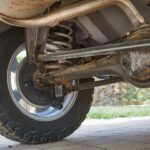
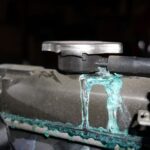
![Transmission Fluid Leak When Parked [12 Causes and How to Fix] transmission fluid leak when parked](https://roadsumo.com/wp-content/uploads/2021/06/transmission-fluid-leak-when-parked-150x150.jpg)


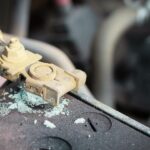

![Read more about the article Power Steering Fluid Leak [5 Main Causes]](https://roadsumo.com/wp-content/uploads/2021/08/power-steering-fluid-leak-300x200.jpg)
